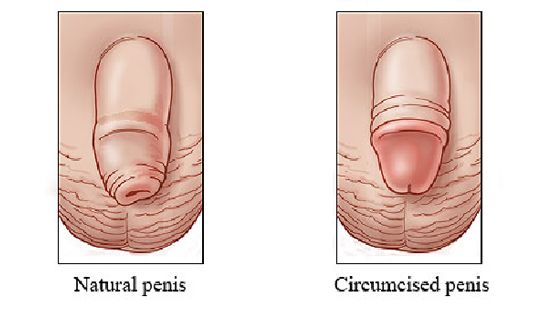Circumcision: What You Need To Know
To better understand your symptoms, visit us for a comprehensive diagnosis and personalised treatment plan
Circumcision: What You Need To Know
What does circumcision mean? When is it medically required?
Circumcision refers to the surgical removal of the foreskin at its attachment to the base of the glans of the penis. It is perhaps the most common surgical procedure performed worldwide, with about 1/3 of the world’s male population being circumcised.

Circumcision is routinely performed in many countries at birth for religious or personal reasons. It is also performed in adults for various medical conditions such as (1) phimosis, where the foreskin of the penis cannot be retracted without causing pain or bleeding; (2) paraphimosis, where the retracted foreskin cannot be replaced and becomes swollen and painful; (3) severe balanoposthitis, where the glans penis and the overlying foreskin are badly infected and swollen; (4) tumours or cysts arising from the penile foreskin, and (5) recurrent urinary tract infections.
Circumcision is most commonly performed using either the dorsal slit or the sleeve techniques. The excess foreskin is divided down to the base of the glans penis, and removed leaving a cuff of healthy tissue around the glans penis. Bleeding points are controlled (usually with cautery), and the edges of the two layers are stitched together using absorb-able sutures.

In certain centres, a CO2 laser is used to remove the excess foreskin. This is reported to result in less bleeding during the surgery itself, thus reducing the duration of surgical procedure. In neonates and children, circumcision is usually performed with the aid of a Plastibell device.
Depending on the patient’s (or parents’) preference, the surgery may be performed under local anaesthesia, penile nerve blocks or general anaesthesia. In most uncomplicated cases, it should not take more than 30 minutes to complete.
More than 95% of all circumcisions heal uneventfully within a month. In the first 2 days after surgery, some patients may experience bleeding after surgery, resulting in swelling and blood clots underneath the wound. Whilst unsightly, this usually settles spontaneously without need for revision surgery in a matter of weeks. Other complications after circumcision may include infection of the wound, and having too much of the foreskin removed.
Most males after circumcision do not complain of decreased libido, pain on penetrative intercourse, ejaculation, or problems with erection, ejaculation or orgasm4. As circumcisions are routinely performed with the penis is its flaccid state, it is sometimes difficult to judge how easily the remaining foreskin will need to stretch when the penis is fully erect. As such, some men occasionally complain of a sensation of tightness on full erection due to having too much foreskin removed. In most cases, this problem is usually short-lived and improved with application of topical medical creams.
Patients are usually discharged home the same day of surgery with a course of antibiotics and painkillers. Pain over the wound site usually resolves after 2-3 days in uncomplicated cases, and adult patients can expect to return to work after a week. Use of absorbable sutures means that these will usually drop off once the wound has healed. Penetrative sexual intercourse should be avoided until the wound has fully healed around 3-4 weeks after surgery. In some patients with severe phimosis, the exposed glans penis may be very sensitive for a few weeks following circumcision, and topical anaesthetic creams may be required for this period.
- Circumcision is one of the most commonly performed procedures around the world
- Benefits of circumcision include prevention of urinary tract infections, penile cancer, and transmission of sexually transmitted diseases
- The surgery usually takes less than 30 minutes, and is relatively painless both during and after the procedure
- Possible complications after surgery include bleeding, infection, and poor wound healing
1. Male circumcision: Global trends and determinants of prevalence, safety and acceptability. World Health Organization 2007.
2. American Academy of Paediatrics Task Force on Circumcision. Circumcision policy statement. Paediatrics 2012; 130(3): 585-586.
3. Siegfried N, Muller M, Deeks JJ, Volmink J. Male circumcision for prevention of heterosexual acquisition of HIV in men. Cochrane Database of Systematic Reviews 2009; 15(2): CD003362.
4. Tian Y, Liu W, WangJZ et al. Effects of circumcision on male sexual functions: a systematic review and meta-analysis. Asian Journal of Andrology 2013; 15(5): 662-666.
